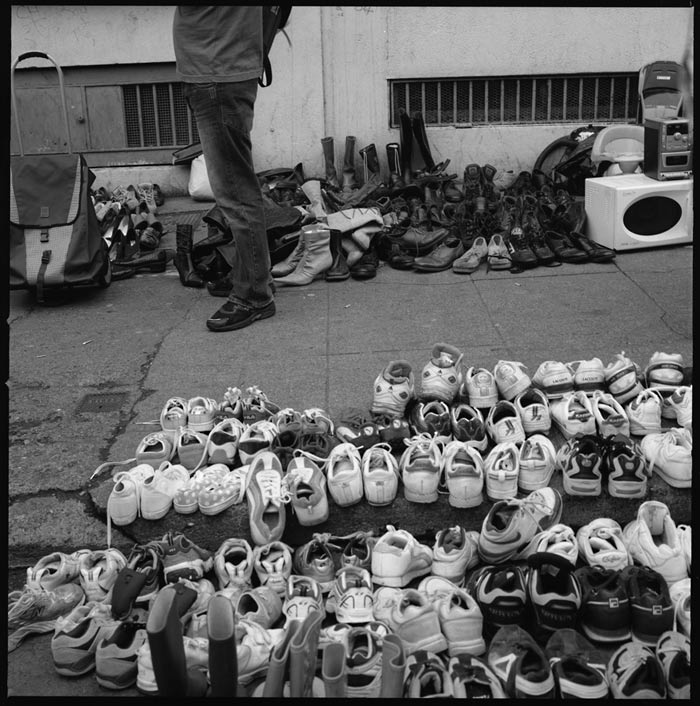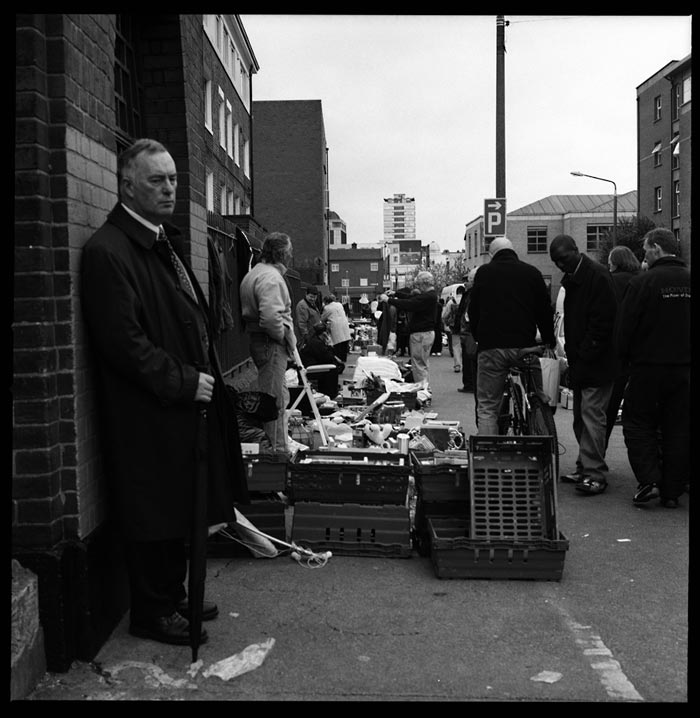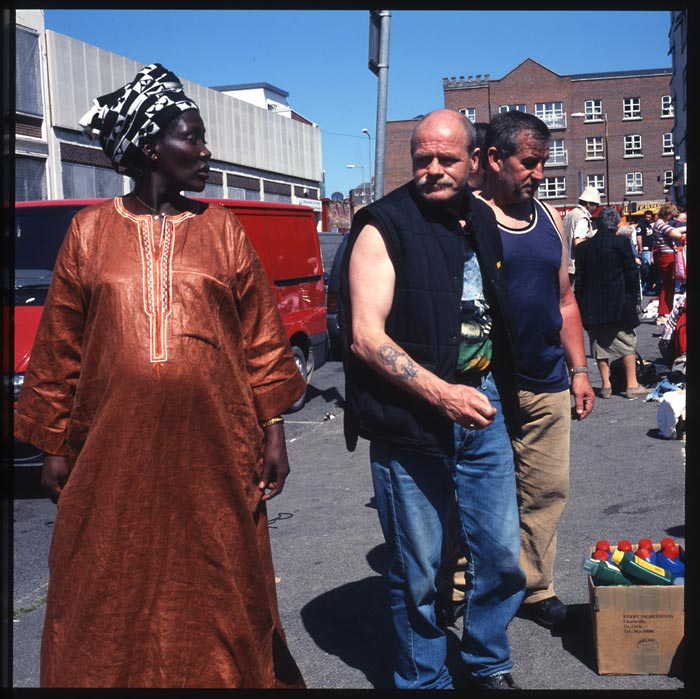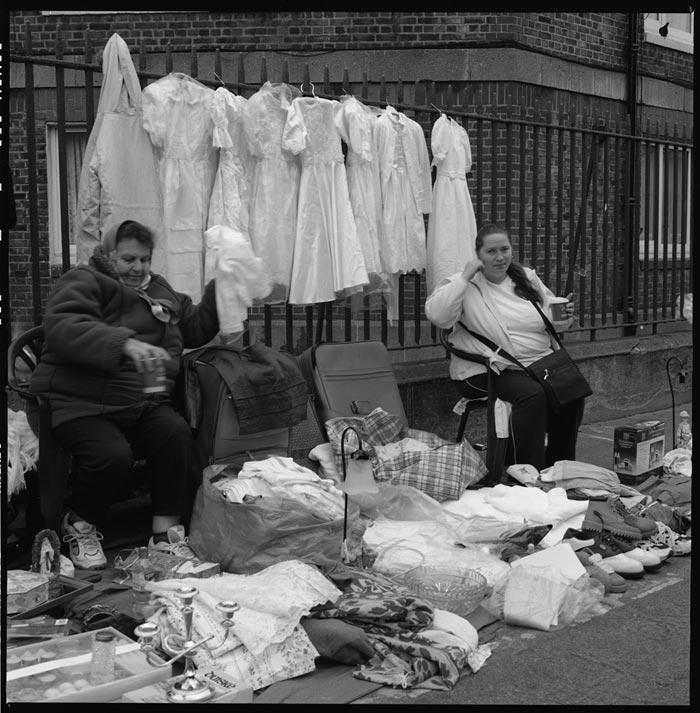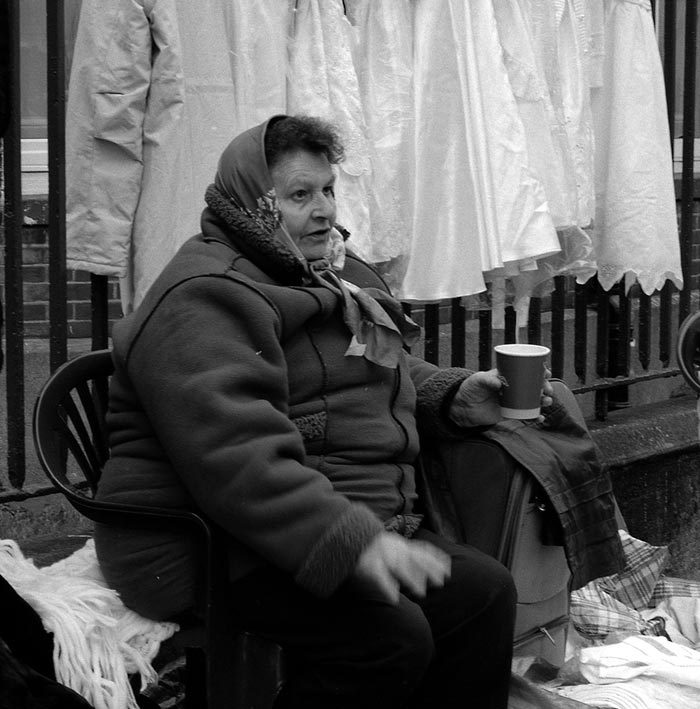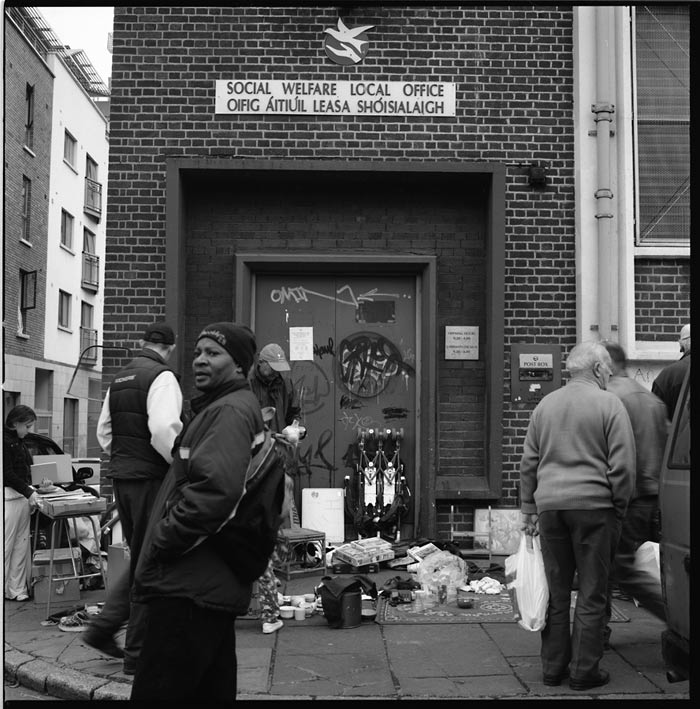Hill Street Market 2005 to 2006
Click on images to enlarge
Fig. 1. Twenty years ago I used to regularly visit Hill Street Market in Dublin as I lived close by on Mountjoy Square. Everything was cheap as chips so I always bought something there, and I would take a few photos with a fifty year old Hasselblad. To this day, I still have a box of useless bits and pieces I bought there.
Fig. 2. About twenty years ago I lived on Mountjoy Square, close to North Cumberland Street where the Hill Street Market took place every Saturday morning. Many a Saturday morning I spent chatting to stall holders and buying a few odds and ends and taking a few photos. I had some notion of making something from all those odds and ends, a piece of art or something, but I never did.
Fig. 3. I used to live on Mountjoy Square, Dublin 1 (1994 – 2009) and I used to visit Hill Street Market which was just around the corner. I’d chat to the stall holders and take the odd photo. During the Celtic Tiger era there was a drop off in the number of Irish people who attended the market. Maybe most of them were gainfully employed in the booming economy and no longer needed to go to a market that was associated with the Dublin Tenements of the past. The Hill began to attract new people with backgrounds in many different countries. Many newly arrived in Dublin City. Maybe they appreciated a market where you could buy a pair of shoes and a second hand overcoat for less than a tenner? All seemed to get along excepting for the occasional incident when a customer wanted something for free. I took the photo in May 2006, I think. If I remember correctly, the woman was from Africa and the two lads were from Dublin and Eastern Europe.
Fig. 4. I lived for fifteen years on Mountjoy Square (1994-2009) which was close to North Cumberland Street where the Hill Street Market was located. The market took place each Saturday and varied in size and duration in response to the changing weather and the passing of the seasons. As Spring began towards the end of February and early March, Tessa Carroll and her daughter would put out the used first holy communion dresses. Most of the clothes on her stall would be piled up on the pavement except for the first holy communion dresses, and later in the year, women's summer dresses, and later still, overcoats. Each first holy communion dress would have it's own clothes hanger and toward the end of February there would be a row of small white silk and lace dresses hanging on the cast iron railings (see photo taken in 2005). Early May was when the Catholic first holy communion ritual took place. Toward the middle of April the row of white silk and lace dresses were no longer being replenished with replacements. Come the end of April the row of small white dresses were being replaced with colorful women's summer dresses and likewise at the end of August these would be replaced with sombre winter overcoats.
Fig. 5. I used to live on Mountjoy Square and I used to visit Hill Street Market of a Saturday. It was just around the corner. I would buy inexpensive odds and ends and chat to the stall holders as I took a few snaps using a Hasselblad that was almost the same age as me. One of the stall holders was Tessa Carroll; she was known by the other stall holders as, 'The Queen of the Hill'. In the world of Dublin street trading, Tessa Carroll was a legend and had been trading for sixty years before retiring in 2019. I took this photo of her in 2005. Tessa Carroll passed away in January 2021.
Fig. 6. The Hill Street Market took place every Saturday morning on North Cumberland Street. It began about 5am and ended at 1pm. The Market shares the Street with a large Social Welfare Office which had long tapering queues when I signed up there for a few times in the 1990’s. The Market was getting smaller when I left the area in 2008. Dublin Bus began running a bus route down the Street which restricted the space available for it. At this time Dublin City Council started renting spaces to the stall holders and this thinned out the number of stalls. I revisited it in 2023 and it was a lot smaller; gone were the piles of shoes or clothes laid out for the customers; gone were the chipped ornaments and odd ends; the Market dealt in washing up liquid, detergent and other necessities at prices that undercut the nearby supermarkets.
Chris Reid 2006

